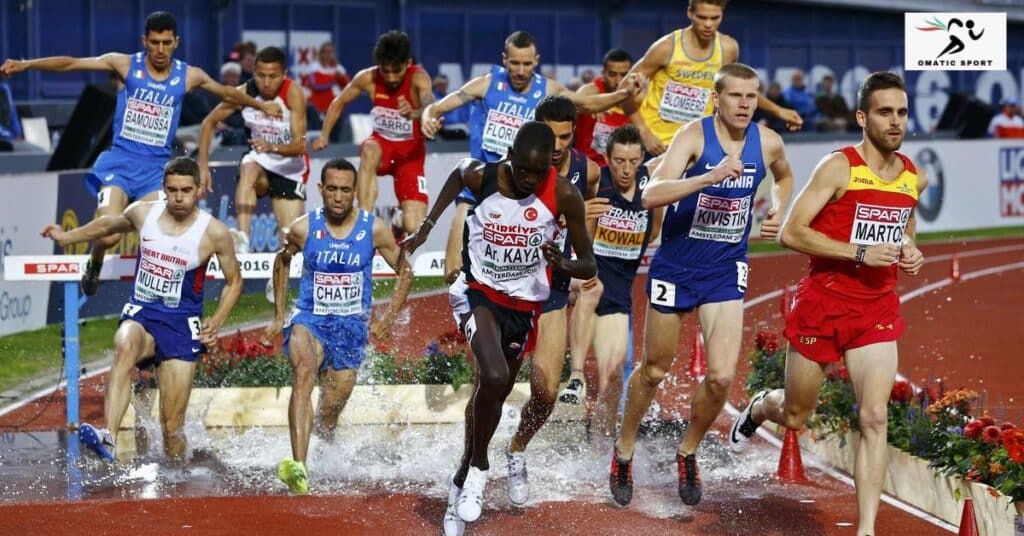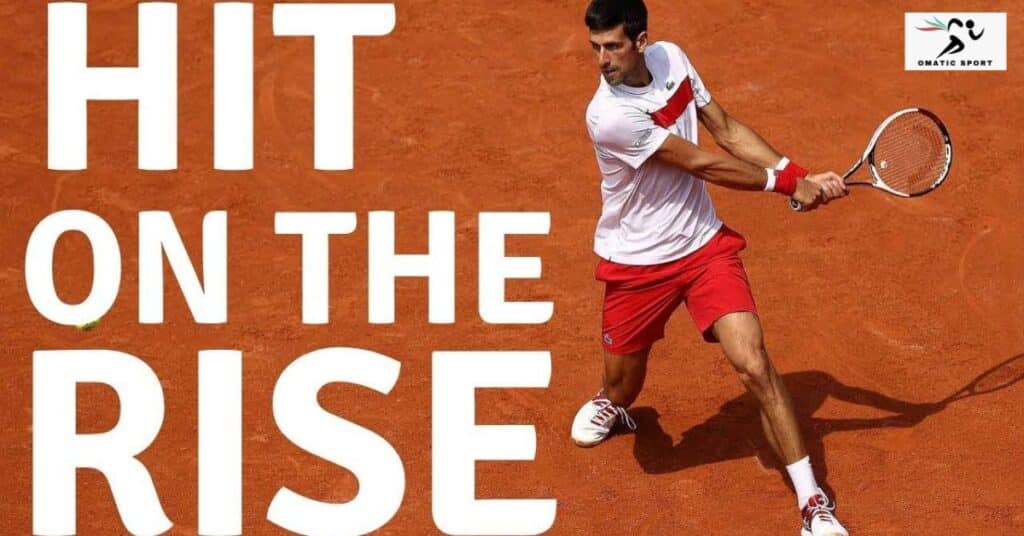
In the grand arena of human endeavors, few activities unite us quite like best sports. From sunbaked pitches to gleaming stadiums, sports captivate billions worldwide, transcending borders, languages, and cultures. But which sports truly reign supreme?
Let’s dive into the exhilarating world of top sports, exploring their global impact, passionate followings, and the unique qualities that make them beloved by millions.
The Universal Language of Sport
Sports are more than just games. They are a universal language spoken fluently by fans across the globe. They shape our cultures, fuel our economies, and often serve as a mirror reflecting societal values and changes. But what makes a sport “the best”? Is it sheer popularity, economic impact, or perhaps the raw athleticism it demands?
While opinions may vary, we’ll explore a mix of criteria including global following, cultural significance, and the sport’s capacity to inspire and unite. Buckle up, sports fans you might be surprised by some of the entries on our list!
The Global Titans in Best Sports
Soccer: The Beautiful Game
When it comes to global dominance, no sport comes close to soccer, or as most of the world knows it, football. With an estimated 2 billion followers spanning 208 countries, soccer truly is the world’s game.
Key Stats:
- Popularity: 1st in 93 countries, top 3 in 100 countries
- Major Event: FIFA World Cup (Viewership: 3.5 billion for 2018 final)
- Economic Impact: The global soccer market was valued at $600 billion in 2021
Soccer’s universal appeal lies in its simplicity and accessibility. All you need is a ball and some open space, making it as popular in the favelas of Rio as it is in the parks of London. But don’t let this simplicity fool you at its highest levels, soccer is a complex dance of strategy, skill, and teamwork.
“Soccer is not the same as Bach or Buddhism. But it is often more deeply felt than religion, and just as much a part of the community’s fabric, a repository of traditions.” Franklin Foer
The sport’s impact extends far beyond the pitch. Major tournaments like the FIFA World Cup can influence international relations and boost national economies. The 2018 World Cup in Russia, for instance, added $14 billion to the country’s economy.
Soccer has also given us some of sports’ greatest icons. Names like Pelé, Diego Maradona, Lionel Messi, and Cristiano Ronaldo are known even to those who’ve never watched a match. These players have transcended the sport, becoming global ambassadors and cultural touchstones.
Cricket: From Village Greens to Packed Stadiums
Cricket might seem like an unlikely contender for the world’s second most popular sport, but with 2-3 billion followers, it’s a true global phenomenon.
Key Stats:
- Major Events: ICC Cricket World Cup, ICC T20 World Cup
- Popularity: Dominating in India, UK, Pakistan, Australia, and much of Asia
- Economic Impact: The Indian Premier League alone was valued at $6.2 billion in 2022
Cricket’s journey from a leisurely English pastime to a high-octane global sport is fascinating. The sport has evolved dramatically, particularly with the introduction of shorter formats like Twenty20 (T20) cricket, which has made the game more accessible and exciting for new fans.
Different Formats of Cricket:
| Format | Duration | Overs per Team |
| Test | 5 days | Unlimited |
| ODI | 1 day | 50 |
| T20 | 3 hours | 20 |
The influence of cricket on South Asian culture cannot be overstated. In India, cricket is less a sport and more a religion. The Indian cricket team’s performances can affect the national mood, and cricket stars are treated like demigods.
“In our country, cricket is not just a game. It is so much more. It is an emotion.” – Virat Kohli, former Indian cricket captain
Cricket’s economic impact is staggering, particularly in India. The Indian Premier League (IPL), a T20 tournament, has become one of the most valuable sports leagues globally, rivaling the likes of the NFL and the English Premier League.
Olympic Darlings in the Best Sports

Swimming: The Ultimate Full-Body Workout
While not as globally ubiquitous as soccer or cricket, swimming holds a special place in the sports world, particularly during the Olympics.
Key Facts:
- Olympic Debut: 1896 (Men’s), 1912 (Women’s)
- Total Olympic Events: 37
- Most Decorated Olympian: Michael Phelps (28 medals)
Swimming’s appeal lies in its combination of athleticism, technique, and strategy. It’s a sport that works virtually every muscle in the body, making it an excellent full-body workout. This health benefit, combined with its low-impact nature, makes swimming accessible to people of all ages and fitness levels.
The sport gained unprecedented attention during the 2008 and 2012 Olympics, thanks to the superhuman performances of Michael Phelps. Phelps’ eight gold medals in a single Olympics (Beijing 2008) redefined what was thought possible in the pool and brought swimming into the global spotlight.
Michael Phelps’ Olympic Medal Haul:
- Gold: 23
- Silver: 3
- Bronze: 2
- Total: 28
Swimming’s variety of events—from explosive sprints to grueling marathons—means there’s something for every type of athlete. This diversity is reflected in the different body types you’ll see excelling in various swimming disciplines.
Athletics: The Purest Form of Competition
Athletics, encompassing track and field events, is often considered the heart of the Olympic Games. It’s a collection of sports that test the fundamental athletic abilities of speed, strength, and endurance.
Key Stats:
- Olympic Events: 47
- World Records: Constantly being challenged and broken
- Global Appeal: Practiced in virtually every country
What makes athletics special is its simplicity and purity. Races are won by who’s fastest, throws by who can propel an object furthest, and jumps by who can leap the highest or longest. This straightforward nature makes athletics universally understandable and appealing.
Categories of Track and Field:
- Sprints (100m, 200m, 400m)
- Middle Distance (800m, 1500m)
- Long Distance (5000m, 10,000m, Marathon)
- Hurdles (110m/100m, 400m)
- Jumps (Long Jump, High Jump, Triple Jump, Pole Vault)
- Throws (Shot Put, Discus, Javelin, Hammer Throw)
- Combined Events (Decathlon, Heptathlon)
Athletics has given us some of sports’ most iconic moments and athletes. From Jesse Owens defying Nazi ideology in 1936 to Usain Bolt’s lightning-fast dominance in the 2000s, track and field has consistently produced legendary performances and personalities.
“I don’t think about limits.” – Usain Bolt
The title of “World’s Fastest Human” – bestowed upon the 100m sprint champion – remains one of the most prestigious in all of sports. It captures the imagination because it represents the pinnacle of human speed, a quality that has been crucial to our survival and success as a species.
Team Sports That Captivate Nations

Basketball: From Peach Baskets to Global Phenomenon
Basketball’s journey from a YMCA gym in Springfield, Massachusetts to global phenomenon is a testament to its universal appeal. With 400 million followers worldwide, basketball has become a cultural touchstone that extends far beyond the court.
Key Facts:
- Origin: Invented in 1891 by Dr. James Naismith
- Major League: NBA (National Basketball Association)
- Global Reach: Played in over 200 countries
The NBA has been instrumental in basketball’s global growth. Through savvy marketing and the cultivation of international stars, the league has built a massive following outside North America. Players like Yao Ming in China and Giannis Antetokounmpo in Greece have become national heroes, inspiring millions to pick up a basketball.
NBA’s Global Impact:
- International Players: 108 from 42 countries (2022-23 season)
- Social Media Followers: Over 2 billion across all platforms
- Broadcast Reach: Games aired in 215 countries in 50 languages
Basketball’s influence extends beyond the sport itself. It has deeply influenced fashion, music, and popular culture. The marriage of basketball and hip-hop culture in the 1990s created a global streetwear phenomenon that continues to this day.
“Basketball is jazz: improvisation, individuality, creativity and ensemble.” – Phil Jackson
Moreover, basketball has been a powerful force for social change. From breaking racial barriers in the 1950s to modern players’ activism on issues like racial justice and voter rights, basketball has often been at the forefront of important social movements.
American Football: The Gridiron Gladiators
While its global reach might not match soccer or basketball, American football—particularly the NFL—is a juggernaut in terms of revenue and cultural impact in the United States.
Key Stats:
- Teams: 32
- Followers: 400 million
- Revenue: $10 billion annually
American football is a unique blend of raw athleticism, strategic complexity, and spectacle. It’s often compared to chess with human pieces, where each play is a carefully orchestrated move in a larger game plan.
Key Positions in American Football:
- Quarterback: The field general, responsible for executing offensive plays
- Running Back: Primary ball carrier for rushing plays
- Wide Receiver: Catches passes from the quarterback
- Offensive Line: Protects the quarterback and creates running lanes
- Defensive Line: Tries to disrupt offensive plays and tackle ball carriers
- Linebacker: Versatile defenders who can rush, tackle, and cover
- Defensive Back: Defends against passing plays
The Super Bowl, the NFL’s championship game, has become an unofficial American holiday. It’s not just a sporting event but a cultural phenomenon, known as much for its halftime shows and commercials as for the game itself.
“Football is like life – it requires perseverance, self-denial, hard work, sacrifice, dedication and respect for authority.” – Vince Lombardi
College football, with its passionate fan bases and longstanding traditions, adds another layer to the sport’s cultural significance in America. The pageantry of college game days, with their marching bands, tailgate parties, and century-old rivalries, is a unique aspect of American sporting culture.
Racquet Sports: Precision and Finesse
Tennis: From Country Clubs to Grand Slams
Tennis, with its 1 billion followers, has evolved from a genteel pastime to a global sport that combines athleticism, strategy, and mental toughness.
Key Facts:
- Historical Origin: 14th century
- Major Events: Four Grand Slams (Australian Open, French Open, Wimbledon, US Open)
- Highest-Paid Female Athlete: Often a tennis player (e.g., Naomi Osaka, Serena Williams)
Tennis’s appeal lies in its blend of individual brilliance and the mental chess match between opponents. A tennis match can be as much a psychological battle as a physical one, with momentum swings and strategic adjustments playing crucial roles.
The Four Grand Slams:
| Tournament | Surface | Location | First Held |
| Australian Open | Hard | Melbourne, AUS | 1905 |
| French Open | Clay | Paris, FRA | 1891 |
| Wimbledon | Grass | London, UK | 1877 |
| US Open | Hard | New York, USA | 1881 |
The sport has given us some of the most iconic rivalries in sports history. The contrasting styles and personalities of players like Bjorn Borg and John McEnroe, Martina Navratilova and Chris Evert, and more recently, Roger Federer, Rafael Nadal, and Novak Djokovic have captivated fans for decades.
“I fear no one, but respect everyone.” – Roger Federer
Tennis has also been at the forefront of gender equality in sports. “Since 1973, all four Grand Slams have offered equal prize money for all competitors, setting a standard that many other sports are still striving to meet.
Table Tennis: The Lightning-Fast Reflexes Sport
Don’t let its diminutive equipment fool you—table tennis, or ping pong, is a sport of lightning-fast reflexes and intense strategy. With 850 million followers, it’s particularly popular in Asia.
Key Stats:
- Ball Speed: Can exceed 100 mph
- Olympic Sport: Since 1988
- Popular Regions: China, Indonesia, Malaysia
Table tennis is known for its accessibility—all you need is a table, paddles, and a ball to play. But at the highest levels, it’s a sport of incredible speed and precision. Top players can impart devastating spin on the ball, making it curve in seemingly impossible ways.
Types of Spin in Table Tennis:
- Topspin: Ball dips downward rapidly
- Backspin: Ball floats and stops or reverses direction on bounce
- Sidespin: Ball curves sideways in the air
The sport’s popularity in China is particularly noteworthy. Table tennis has been China’s national sport since the 1950s, and Chinese players have dominated international competitions for decades. This dominance has led to interesting diplomatic moments, such as the “Ping Pong Diplomacy” of the 1970s that helped thaw US-China relations.
“Table tennis is like an atom. To the ignorant it is merely microscopic and insignificant in existence, but to the dedicated, it is intricate in design and the building block to everything we know.” – Matt Hetherington
The health benefits of table tennis are also significant. It’s an excellent sport for improving hand-eye coordination, reflexes, and mental acuity. Some studies have even suggested it could be beneficial in managing symptoms of dementia and Alzheimer’s disease.
Sports on the Rise

Mixed Martial Arts (MMA): The Fastest-Growing Combat Sport
In recent years, Mixed Martial Arts (MMA) has exploded in popularity, becoming one of the fastest-growing sports worldwide.
Key Facts:
- Major Organization: Ultimate Fighting Championship (UFC)
- Global Fanbase: Estimated 450 million fans
- Revenue: UFC alone generated $960 million in 2020
MMA’s appeal lies in its raw, unfiltered nature and the diverse skillsets it showcases. Fighters must be proficient in multiple disciplines, from striking (boxing, kickboxing, Muay Thai) to grappling (wrestling, Brazilian Jiu-Jitsu).
Main Disciplines in MMA:
- Boxing
- Kickboxing
- Muay Thai
- Wrestling
- Brazilian Jiu-Jitsu
- Judo
- Karate
The UFC has been instrumental in MMA’s rise, turning it from a niche spectacle into a mainstream sport. The organization has produced crossover stars like Conor McGregor and Ronda Rousey, who have become household names beyond the MMA world.
“I’m not in this to survive. I’m in this to thrive and milk this game for every ounce of money.” – Conor McGregor
However, MMA’s rise hasn’t been without controversy. Concerns about fighter safety and long-term health impacts continue to be debated. The sport has made significant strides in implementing safety measures and medical protocols, but the inherent risks of combat sports remain a point of discussion.
Esports: The Digital Frontier of Competition
Esports, or competitive video gaming, represents the cutting edge of what we consider “sport.” With massive viewership and prize pools rivaling traditional sports, esports is reshaping the landscape of competition.
Key Stats:
- Global Audience: 495 million in 2020, projected to reach 646 million by 2023
- Revenue: $947.1 million in 2020
- Major Games: League of Legends, Dota 2, Counter-Strike: Global Offensive
Esports’ meteoric rise has been driven by advances in technology, the growth of streaming platforms like Twitch, and a generational shift in entertainment preferences. Major tournaments now fill stadiums and attract millions of online viewers.
Largest Esports Prize Pools:
| Tournament | Game | Prize Pool | Year |
| The International 10 | Dota 2 | $40,018,195 | 2021 |
| Fortnite World Cup Finals | Fortnite | $30,000,000 | 2019 |
| The International 9 | Dota 2 | $34,330,068 | 2019 |
The debate over whether esports should be classified as “real” sports continues, but its impact is undeniable. Traditional sports organizations, including the NBA and Formula 1, have launched their own esports leagues, recognizing

Roman Moris is a skilled writer with expertise in team names and game names. As a member of the Techy Lous team, he blends creativity with a deep understanding of technology, delivering engaging content on the latest innovations in gadgets, AI, and tech trends.

